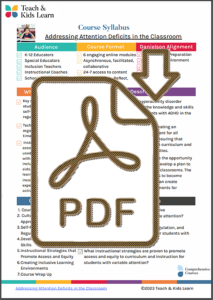Restorative Practices for Educators: Building Positive School Culture and Climate, Grades 3-12
Course Description
| Are traditional disciplinary methods falling short in your school? Are you seeking a more effective approach to managing student behavior and fostering a supportive learning environment? This course offers a comprehensive solution for educators and administrators eager to create lasting, positive change.
In this course, you’ll delve into the fundamentals of restorative practices and discover how they can revolutionize your approach to discipline and school culture. You’ll gain a thorough understanding of what restorative practices entail and explore the numerous benefits they offer, including improved student engagement, reduced conflict, and enhanced school climate. |
Key highlights of the course include:
- Introduction to Restorative Practices: Learn the core principles and philosophy behind restorative practices.
- Benefits and Impact: Understand how implementing restorative practices can positively influence student behavior and the overall school environment.
- Strategic Implementation: Acquire practical strategies for integrating restorative practices into your classroom and school-wide systems.
- Creating a Supportive Culture: Discover techniques for fostering a more inclusive and empathetic school culture that supports students and staff.
Whether you’re a teacher looking to enhance classroom dynamics or an administrator aiming to transform school-wide practices, this course provides the tools and insights needed to effectively implement restorative practices and build a more harmonious educational environment. Join us to make a meaningful impact and create positive, restorative change in your school community.
Essential Questions
This course will answer the following essential questions:
- How do restorative practices contribute to creating a more inclusive and supportive school culture and climate?
- What strategies can educators use to integrate restorative practices into their classrooms and school-wide systems to benefit teachers and students?
- In what ways do restorative practices differ from traditional punitive disciplinary methods, and why are they more effective when implemented properly?
- What are the short-term and long-term effects of punitive disciplinary practices, particularly for minority students?
Course Modules
|
| Course Syllabus |
|
Danielson Teacher Framework Course Alignment


